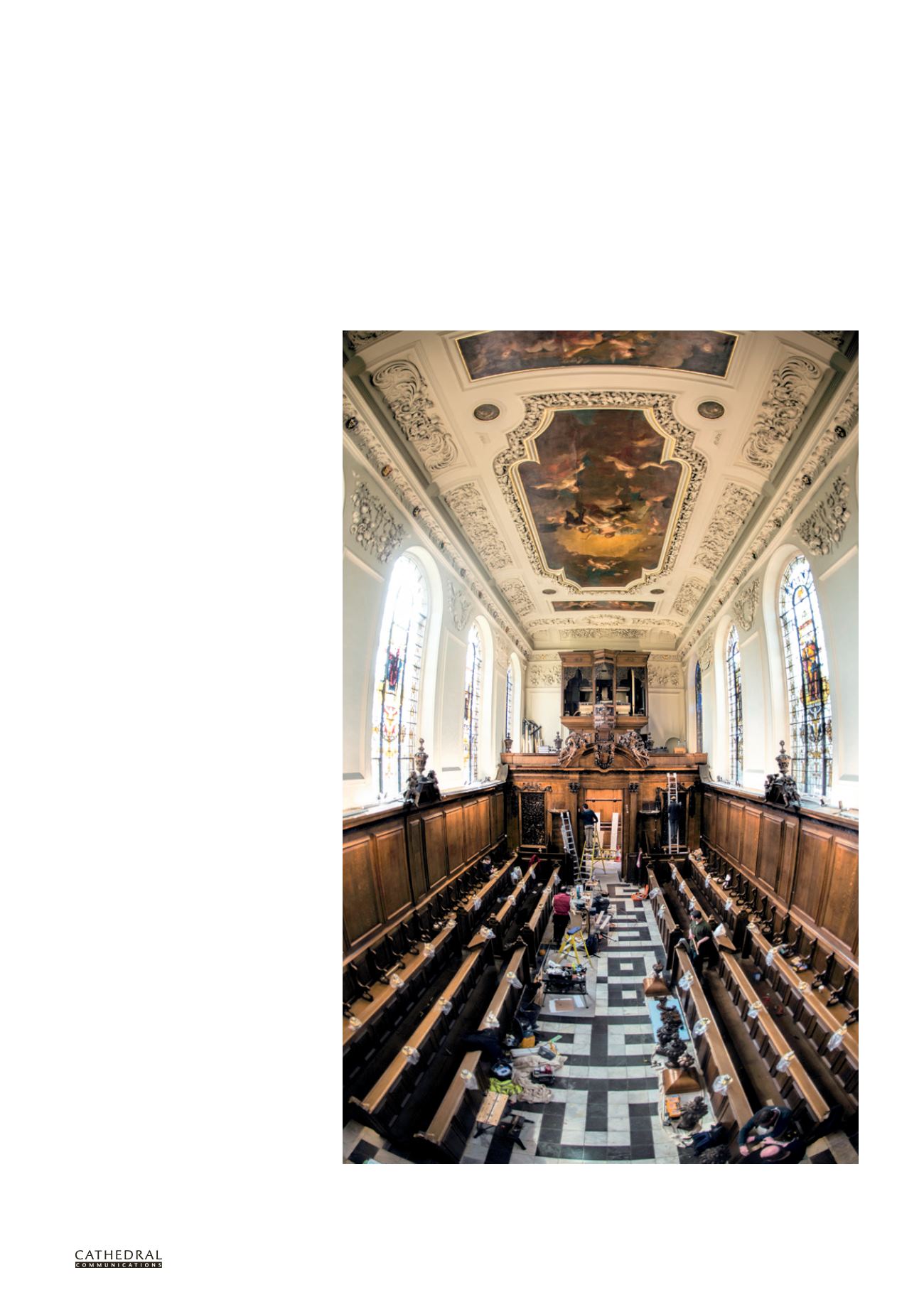

BCD SPECIAL REPORT ON
HISTORIC CHURCHES
24
TH ANNUAL EDITION
41
GRINLING GIBBONS
at Trinity College Chapel, Oxford
Martin Hall
T
RINITY COLLEGE was founded
in 1555 by Sir Thomas Pope
using the buildings of the former
Durham College. The medieval chapel,
consecrated in 1410, was retained, but by
the late 17th century it was in a poor state
of repair, its condition exacerbated by
lack of maintenance during the Civil War.
When Ralph Bathurst became president
of the college in 1664 he devoted himself
to the restoration of Trinity’s fortunes. He
cherished the dream of a new chapel for
three decades. With great generosity, he
paid for the building shell himself, while
college records show that he wrote many
letters to solicit funds to enable him to
pay for the completion of the magnificent
interior. The result was the current chapel.
Completed in 1694, it was built largely
on the footprint of the original chapel.
Letters reveal that Bathurst had
assistance from Sir Christopher Wren
who was consulted on the design at a late
stage, but in time to influence the chapel’s
external appearance and to give the
parapets their distinctive flaming urns.
On entering the chapel today, the
most striking feature is Grinling Gibbons’
magnificent screen which divides the
antechapel from the nave. It features
fluted Corinthian columns and an arched
pediment, topped with carvings of the
Evangelists, and has two fretwork panels
either side, with putti (infant angels) at
their centres.
Passing through the screen reveals
the impressive reredos behind the
altar, which was also designed by
Grinling Gibbons and is considered
to be one of the best examples of his
work. Above, the sumptuous ceiling is
decorated with exquisitely carved and
moulded plasterwork, thought to be
heavily influenced by Gibbons and hand
modelled, possibly by Bradbury and
Pettifer or Edward Goudge, ‘the beste
master in England in his profession’.
At its centre is a painting, ‘Christ in
Glory’, by Pierre Berchet, about eight
metres long and set between two
smaller painted panels. The result was
Conservators at work on Grinling Gibbons’ screen which divides the antechapel from the nave (All photos:
Bruce Hammersley)


















